
Ordinary adjustable keyboard trays are supposed to improve typing ergonomics—they do this by slightly tilting the keyboard's front edge up in order to eliminate "wrist extension". When seated at a desk, these measures work well. However, standing desk and treadmill desk users will find that ordinary adjustable keyboard trays cannot tilt sufficiently to achieve the ideal angles required when not sitting—nor were they ever designed to. iMovR's pioneering research in this arena has led to the patenting of the SteadyType® infinitely adjustable keyboard tray and the development of the field of ergodynamics.
SteadyType-equipped desks are the first and only adjustable-height desks in the market with optimal "ergodynamics" for working at a standing or walking desk, in addition to ergonomics for when sitting.

The Problem with Traditional Trays
Most adjustable keyboard trays cannot achieve more than −15° of keyboard tilt. When standing, without the benefit of chair armrests to support the user's forearms, −15º is not steep enough to achieve the most "neutral" and therefore ergonomic position. This can lead to a variety of muscle and joint strains, and can result in reduced typing speed, accuracy, and endurance. In over two years of extensive user testing, iMovR's engineers determined that steeper keyboard declines can correct these issues by allowing the user to type at a more neutral angle—putting the least strain on muscles and joints in the hands, wrists, arms, shoulders, and neck—while minimizing "computer hunch" and eliminating wrist flexion and extension entirely.

Other standing desk manufacturers show photos of users standing at their desks with their elbows at a 90° angle, with the user's arms perched on arm rests. In reality, when standing, numerous muscles are engaged in fighting gravity to hold your arms up, creating excess tension in muscles and tendons from your fingertips all the way up to your neck and shoulders. This results in earlier fatigue, heightened exposure to ergonomic injury, and reduced typing proficiency to boot.
iMovR's proprietary SteadyType design allows you to set the keyboard at literally any angle up to −85° (rubber bumpers prevent the keyboard from slipping.) A tilt angle of −20° or greater is what most users will find the most comfortable for typing while standing. For treadmill desk usage, angles of −25° to −40° achieve the greatest improvements in ergonomics and comfort, and maximize typing speed, accuracy, and endurance. A crucial benefit for treadmill deskers is eliminating "anchoring stresses" which occur when users press down on their palms to maintain their typing position as they slightly sway while walking. Working at steeper angles allow the hands to relax and merely "hang on" loosely, without needing to apply pressure on the palms to maintain a consistent hand position over the keyboard.
The net result is higher typing speed and accuracy than any other treadmill desk setup.
Don't Forget About the Mouse
High-end keyboard trays often have a separate mouse pad that allows you to raise the height of the mouse relative to the keyboard. This is done to minimize the motion of reaching out for your mouse or trackball, which can aggravate joints and muscles in the arms and shoulders. Desks with built-in SteadyType keyboard trays have two height settings that position the trays at different levels relative to the desk surface, so you can find the most comfortable position for your setup. iMovR's SteadyType Exo and SteadyType Slide Ergonomic Keyboard Trays use fencing pins to create a cradle where your mouse can rest close at hand on the inclined surface itself.
Superior Stability
Both built-in SteadyType keyboard trays and the peripheral SteadyType add-on keyboard trays provide unmatched stability when compared to ordinary keyboard trays. While we always recommend using a keyboard tray, it's important to note that non-SteadyType trays attached under standing desks normally have significant shaking problems, which will reduce typing efficiency. Not only does the "bounce back" of the keyboard tray disrupt typing flow, the pressure against the tray may cause the desk and attached monitors to shake slightly, forcing your eyes to refocus on your screens. SteadyType keyboard trays are by far the most rigid trays keyboard trays in existence, effectively eliminating these concerns.
Products with SteadyType
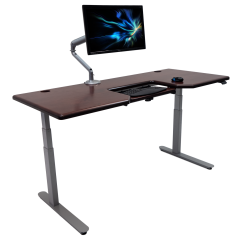
As low as $3,110.00
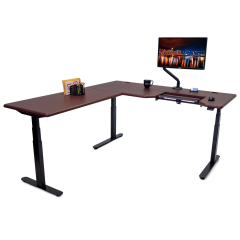
As low as $2,810.00
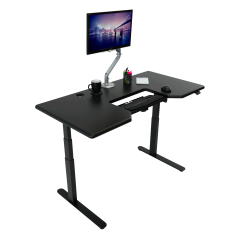
As low as $1,730.00
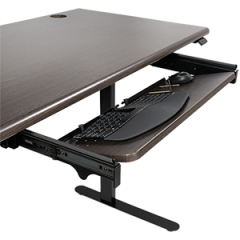
As low as $363.00
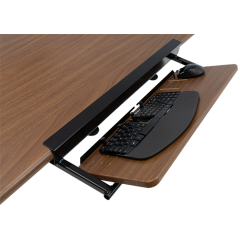
As low as $288.00


